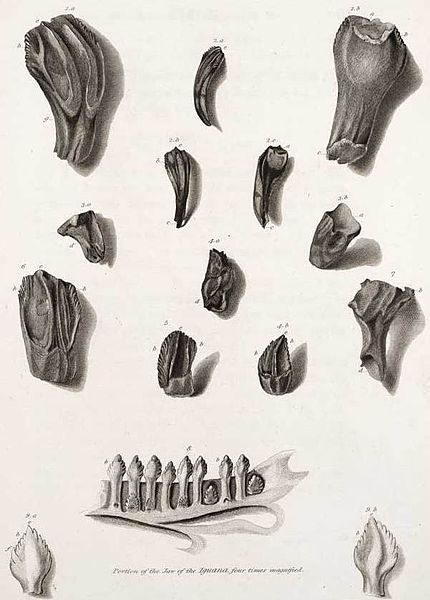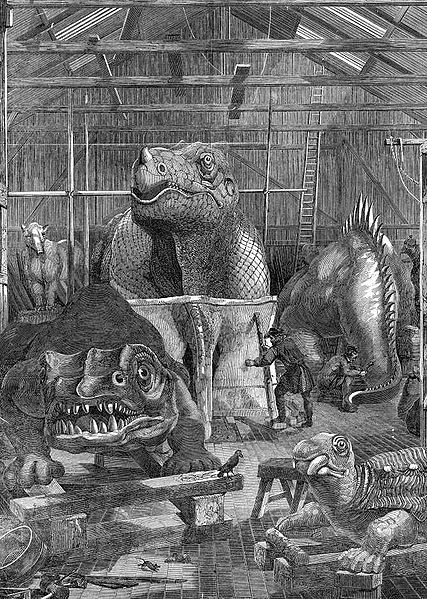Building the Iguanodon
Created by Wietske Maria Smeele on Tue, 01/10/2017 - 10:52
Part of Group:
The earliest dinosaurs to be unearthed in the nineteenth century were merely fragments—parts of animals that walked the earth millions of years ago. Nonetheless, these fragments inspired the Victorian imagination to construct creatures that terrified and awed the public. This timeline traces the creation of one of the most prominent Victorian dinosaurs—the Iguanodon.
Timeline
Chronological table
| Date | Event | Created by | Associated Places | |
|---|---|---|---|---|
| 1822 |
TeethIn 1822, paleontologist Gideon Mantell unearthed a collection of strange teeth in Tilgate Forest in Sussex, England. Although aware that these teeth did not belong to any creature indigenous to southern England, Mantell spent the next three years struggling to classify the teeth; did they belong to a herbivore or a carnivore? A mammal or a reptile? Eventually, Mantell settled on the reptile, and more specifically on some gargantuan relative of the iguana. He named this new giant reptile “iguana-saurus,” meaning “iguana reptile,” but quickly changed the name to the more easily pronounced “Iguanodon.” However, although this new retile had teeth, an immense bulk, and even a name, it still lacked a body.
|
Wietske Maria Smeele | ||
| 1850 to 1854 |
PlasterAlthough paleontologists had not yet unearthed a complete skeleton of Iguanodon by the middle of the century, leading Victorian paleontologist Sir Richard Owen was nonetheless eager to include this most remarkable of dinosaurs in the geological exhibition at the newly moved Crystal Palace at Sydenham, London. Geologist and artist Benjamin Waterhouse Hawkins was selected to design and construct the life-sized models of two Iguanodon, along with a number of other prehistoric land and water monsters. Because Iguanodon’s body was still largely speculative at the is point, there are many aberrations in Hawkins’ models: Hawkins’ Iguanodons are quadrupeds, rather than the bipedal dinosaurs we know today, and they also sport a fierce spike on their snout which should actually be located on their thumb.
|
Wietske Maria Smeele |


